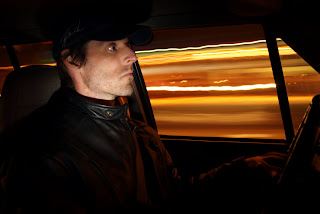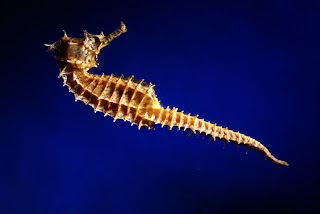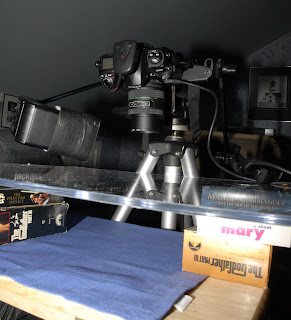Often people are not too sure what a wedding photographer should have before their first (or even their next) wedding. I fell into this category as a beginner wedding photographer. I am not saying that I am the best, but I am saying that I have learned a lot about this very topic from my own experiences.
Here are ten of the most important things that you must have before you photograph your very first wedding.
Here they are, and in no certain order.
1) Confidence in yourself.
Well, if you have done things correctly, than the big day is here. You are about to photograph your very first wedding, but you are more nervous than the bride. That’s normal for a first timer, and here is why that is, and what to do about it.
Weddings are a one time chance to make or break you. Word of mouth spreads faster than any other medium of advertising. If you make a mistake and miss the money shot, or a series of money shots, than it will be all over the “word of mouth” news. However, if you manage to capture each and every shot that best shows the ceremony in great detail, than you are about to be a wedding photographer celebrity.
There is one great secret that will prevent you from becoming the worst wedding photographer ever. That secret is practice.
Devote time to practice shooting inside of wedding chapels, reception halls, churches, and outside in the great outdoors (under several different conditions). Notice what you have done in order to get a better capture than the last one. Keep a note book with this very information in it, and read it later as you think about the upcoming event.
Know in advance how the wedding day events will unfold. This will allow you to be exactly where you will need to be to get the best possible shots. Knowing what is about to happen is gold when it comes to wedding photographers.
Become familiar with your cameras settings. How to access “this or that” setting in the menu and just exactly what all of the buttons and dials actually do will make you more proficient. Learn how to quickly adjust from one setting (inside and dark) to another (outside in full sun) using said menus, buttons, and dials. Submit these routines to memory.
Lastly, become a good location scout. Find out where the wedding and the reception is going to be held. Scout the wedding hall, as well as its’ grounds. Next, do the same at the reception hall. Practice with a friend as the client, filling in at these places. Keep a log of what you set your camera at in order to get the best possible images at these places. This will all pay off both in self confidence and in great wedding images.
2) Know your gear.
Knowing what is available for you to use in your gear bag is a huge asset. “What lens is the best choice for which settings”, and “what else should I try with this or that shot in order to make it better”, are questions that you should always ask yourself during any photography shoot.
Having nice gear is a plus, but not a necessity. I captured my first wedding with a glorified digital point and shoot camera. Hind sight is honestly 20/20. The lens did move in and out as a zoom, but I can’t even imagine what the actual aperture settings were for this camera. It made for some really blurry images. This just goes to show that whatever gear you currently own; it can be used to photograph a wedding.
When it comes to lenses, fast glass is also a plus. Opening up to an aperture of 2.8 will let in enough light to stop most movement with out any blurring what so ever. If you can, make sure that the lens that you use the most often is your best and fastest glass.
Know in advance where you would like to shoot from when inside the wedding chapel and the reception hall. Proper scouting and a good flow of the day’s events in advance will give you these locations. Don’t get complacent, keep your eyes open and scout these locations thoroughly! See the best possible image in your minds eye, and ask where is it that you need to be standing and what gear to use in order to capture that very shot.
3) Backups of backups.
Whatever can possibly go wrong will go wrong. Know one knows why that happens, it just does.
Ask yourself what you would do if your camera failed to operate during the wedding ceremony. Not a good situation to find yourself in, is it? Now is the time to start thinking about this very scenario, or instead, how to avoid it.
First of all we can’t all afford to purchase two or three of everything. We wouldn’t be looking to start photographing weddings if we had that kind of cash, right? What exactly is it that we all should do when it comes to this very topic of preventing failure?
The easy solution is to make sure that your gear is in tip top shape. Make sure that it is serviced regularly, and it remains in a safe environment when not in use.
Next, think about which piece of gear has the most moving parts. This is the piece of gear that might just be the most likely to fail. Now, if you can’t purchase a second one, you should rent one. You should do this because someone else’s memories of a once in a lifetime event are counting on you not to fail!
I own two camera bodies. This is for two reasons. First, if one fails I always have a second one to shoot with. Secondly, I can keep two different focal length lenses in constant operation throughout the wedding by simply switching cameras.
Reinvest in yourself by owning backups. Take some of the money that you are making and put it into having a second way of capturing the weddings that you are responsible for capturing. You will thank yourself for doing this, trust me!
4) People skills.
People skills are an absolute necessity when it comes to being a wedding photographer. The clients need to be comfortable knowing that you are about to become a major part of their special day. You will need to answer questions from the wedding guests and you will need to routinely direct the wedding party when photographing them.
You will need to be soft in your words, yet be reassuring at the same time. The bride and groom will look to you for advice because you have been through a ton of weddings before, and they have not. They will not know if things are running smoothly or not, and it will be up to you to reassure them that things are under control, even if they are not.
You will, from time to time, need to assure the bride and groom that they are safe while under your careful watch. One way to do this is to take charge. Do not go off and bark orders or constantly remind everyone that time is money. What I meant is suggest that the wedding party do this or that, but always allow the bride and groom to either “yay or nay” your kind and thoughtful suggestions.
A second thing that I like to do, in order to show that the wedding party is safe in my hands, is to adjust the bride, groom, and the wedding party from time to time. Stopping the shoot in order to adjust a tie, or fluff the wedding dress shows that every detail is safe in your hands. Keeping a constant vigil on the smallest of details reminds all that attend that you are there to make things flow nice and safe.
5) An eye for detail.
Having an eye for detail, in my humble opinion, can make or break a wedding photography session. Every detail (no matter how minute) that you can manage to include into the wedding images will help preserve the special day for years and years to come.
For example, making sure to photograph the table full of name badges always looks great in the final wedding album. Showing up early and capturing the church in an amazing sunset will last decades as “the shot that made a bride cry”. There are so many details on a wedding day that you could even hire a second person to do nothing else except shoot the minor details of a wedding. The shoes, rings, flowers, cake, cocktails, attendees, well heck the list goes on and on.
Each of these thoughtful images should go into the album collection in order to make it feel special. It will make the bride and groom think that you really went over the top to ensure that their special day was well preserved. Plus, 10 years from now, when they look through the album that you created, it will make them feel as if they are right there again. All of the little things that they have forgotten about will be right there looking them in the face.
Details, no matter how small, can be just as important as the event itself. Keep a sharp eye out for the little details, and capture as many as possible!
6) Appropriate footwear
Just what on Earth is appropriate footwear for a wedding, and why is it on the top 10 list of most important things for wedding photographers?
Well, here is the scoop, in my own tale.
If I were asked to sum up my first wedding, I would report that it was a marathon. I assumed that I was in good enough shape to photograph a wedding. It sounded easy to me, even though the burden was stressful. Little did I know exactly what I was in for.
I had to run around the wedding chapel more times than I could count in order to capture the people entering and leaving, let alone the exchange of vows. I had to leap over bags of gear, and run up and down several flights of stairs, constantly. At the reception I found myself sliding across the reception halls’ floor making sure to find the best angle to shoot from, and that was even before any of the dancing started. Add to this the fact that it was at least a 12 hour day, and so I was exhausted! My feet hurt, and I was wondering if I had what it took to finish the day out.
By simply choosing comfortable shoes I found that all of this added stress could be cut away to zero. Endurance could be extended to higher levels by simply wearing better shoes. Keep in mind that no one wants to see the wedding photographer running around in Air Jordan’s, but there are a ton of shoe manufactures out there that make black or brown running shoes.
7) Know your abilities.
I love to say “Yes” and I say it way too much. I want to perform in the utmost professional fashion that I possibly can. Nothing bums out a mood like a stern “No”.
With this comes a very common mistake. The truth is that satisfying clients is very important. Knowing what you are capable of is most often even more important.
Can you provide coverage of everything that the clients want all by yourself? Should you look into hiring a second shooter? What about hiring an editor for the images or a perhaps a wedding album designer?
These questions need answering before you commit yourself to a quote when bidding on a wedding shoot. Knowing just how much you are capable of means everything to a wedding quote! You will need to include the costs of each and every thing that you “sub out” to others (editing, album design, printing, ect). Hiring others needs to be the clients’ responsibility, and letting them know that is extremely important.
Lastly, getting comfortable with your own limitations before you get in over your head will come with the business. We all make mistakes. We all want happy clients. Finding the way to explain your own abilities and your own limitations is crucial when booking weddings. Once the clients know how much is possible they will be fully understanding of including extra costs into the quote for any extras that they may wish for.
8) A formula for your price
Perhaps a better title would have been “a working formula for your price”. This formula needs to reflect exactly what it costs you to photograph a wedding. Some of the most often overlooked items for this formula are time editing images and your business overhead.
Perhaps a simple formula might look like this:
Business overhead (what it costs you to be in business each day)
+
Length of event (hours)
+
Transportation to and from the shoot
+
Creative fees (Days editing the images, album creation, ect.)
+
Printing costs
+
Your profit
…………………
=Wedding quote
9) The wedding gig itself.
How is it that we get the wedding gig itself?
Do we spend fortunes on advertising in hopes of getting enough weddings to get back the initial cost of advertising? Will simple word of mouth work? Do I need a wedding portfolio or a fancy website to do the bidding work for me?
The simple answer to all of the above is “no”. What works best for some may not work best for you. If you are starting out fresh, without anything like a website or a portfolio, I would suggest getting humble.
What I mean by “humble” is to shoot weddings and portraits for free. Find some pre-wedded couples that are hard up for the cash to spend on their wedding. Volunteering works both ways. You do a nice deed for them, and you get images to put into a portfolio and your new website. Karma also comes your way, which is priceless.
Perhaps the best part of shooting for free is that you have an amazing vehicle for learning the ropes. All of your wedding photography questions will get answered as the day unfolds itself. Besides, when you shoot for free there is little to no pressure to perform at maximum capability. You can make some mistakes and it will be O.K.
As the jobs come in from word of mouth and the new images that you have, you can invest in newer and better marketing. It becomes an upward pyramid of success, as long as you both get humble, and then continue to devote some time into it.
10) “Following thru” skills
This is saying what you mean and doing what you say. Do not feel that you have to become a “Yes man”. Clients ask for all sorts of extra things, it is up to you to answer accordingly. They ask because they do not know the answer.
You can say “yes” or “no”, or something even better. Explain that if you agree to their request for something extra it will cost you time and money. Relate to the client that you might be willing to perform the extra item, but at a slightly inflated cost. No one expects you to do everything for nothing, well, except maybe some of the folks that recruit on Craigslist.
If you have the ability to include some extras, make sure that your client knows about it. Leave it up to them to accept your offer, or not. They can’t purchase what they don’t know exists. On the other hand, don’t be afraid to say no.
Bottom line is that you need to follow thru on exactly what it is that you said you would do. This applies to posting images, burning image CD’s, album creation, and whatever else you were asked to do.
Following thru is what separates the professional from the novice. You do not need to have the best work ethic on the planet, but just do what it is that you said you would do. Remember, word of mouth can make or break you as a wedding photographer.


















